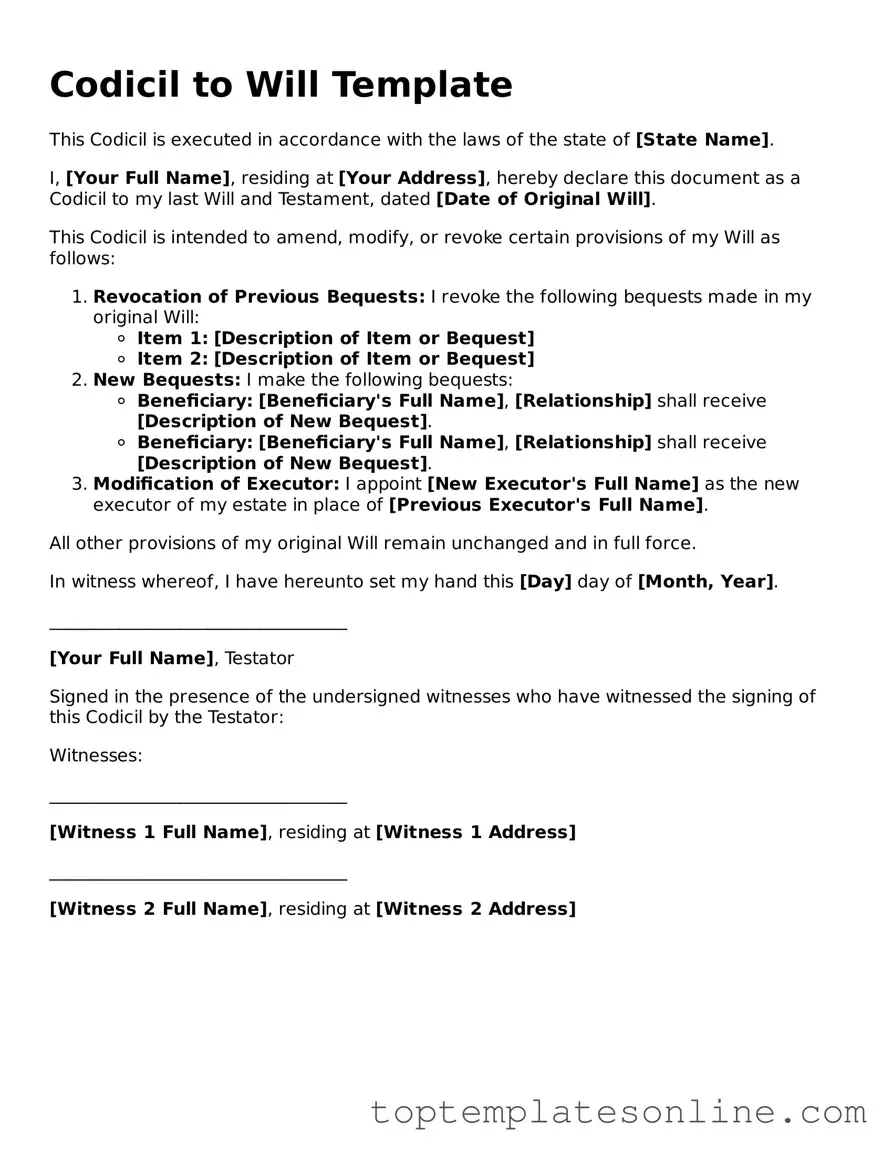Attorney-Approved Codicil to Will Form
A Codicil to Will is a legal document that allows a person to make changes to an existing will without having to rewrite the entire document. This form can add, modify, or revoke provisions in the original will, ensuring that a person's final wishes are accurately reflected. Understanding how to properly use a codicil is essential for anyone looking to update their estate plans effectively.
Customize Codicil to Will Here
